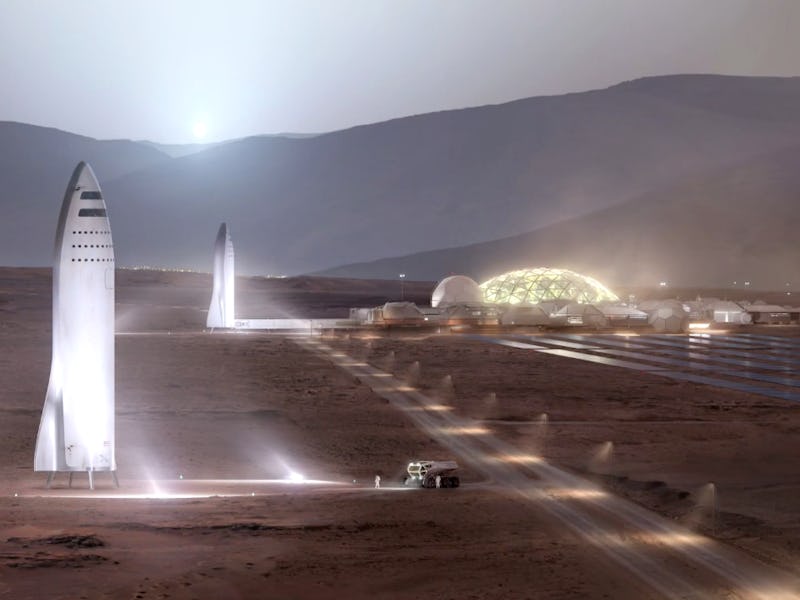SpaceX’s plans to reach Mars are taking shape on terra firma. On Tuesday, new images showed the progress CEO Elon Musk’s company is making toward building a factory for the Mars-bound BFR — short for “big” and “rocket” — as well as the giant catcher’s mitt designed to save as much of the company’s rockets as possible.
The images from Teslarati show the progress at Berth 240, a lot near the southwestern part of Los Angeles’ Terminal Island that sat vacant for nearly 10 years. Documents from March revealed that the applicant planned to use the site to build rockets over a 10-year lease. The company is working within the confines of the city’s rules, undertaking minimal refurbishment to the buildings while demolishing a single historic building. The resultant BFR factory is expected to take 12 to 18 months to complete in the first phase and another 12 months for the second phase.
The BFR is gradually taking shape in time for its test flight, which Musk told the audience at the South by Southwest conference in Austin, Texas, in March could happen as early as the first half of next year. The launch will precede two unmanned rockets flying to Mars in 2022, followed by two more unmanned rockets and two manned rockets visiting the red planet in 2024.
The lot is also being used to construct a new catcher’s mitt for the ship Mr. Steven. The net welded to the back of the ship was meant to catch the fairing of rockets as it fell back to Earth, to help avoid what Musk described as “a pallet of cash worth $6 million dollars falling through the sky.” First deployed in February 2018, the original design failed to catch anything, which led Musk to decide to extend to net area by “a factor of 4” last month, meaning the net will cover around 1.5 acres.
Work continues at Berth 240, where an arm-free Mr. Steven gears up for action to plug the approximate 50-meter gap between the net and the fairing. SpaceX president Gwynne Shotwell indicated the company would see around 18 launches next year, meaning the new mitt could see plenty of action.
With a more efficient method of saving rockets, SpaceX’s Mars ambitions could prove more cost-effective than anticipated.
